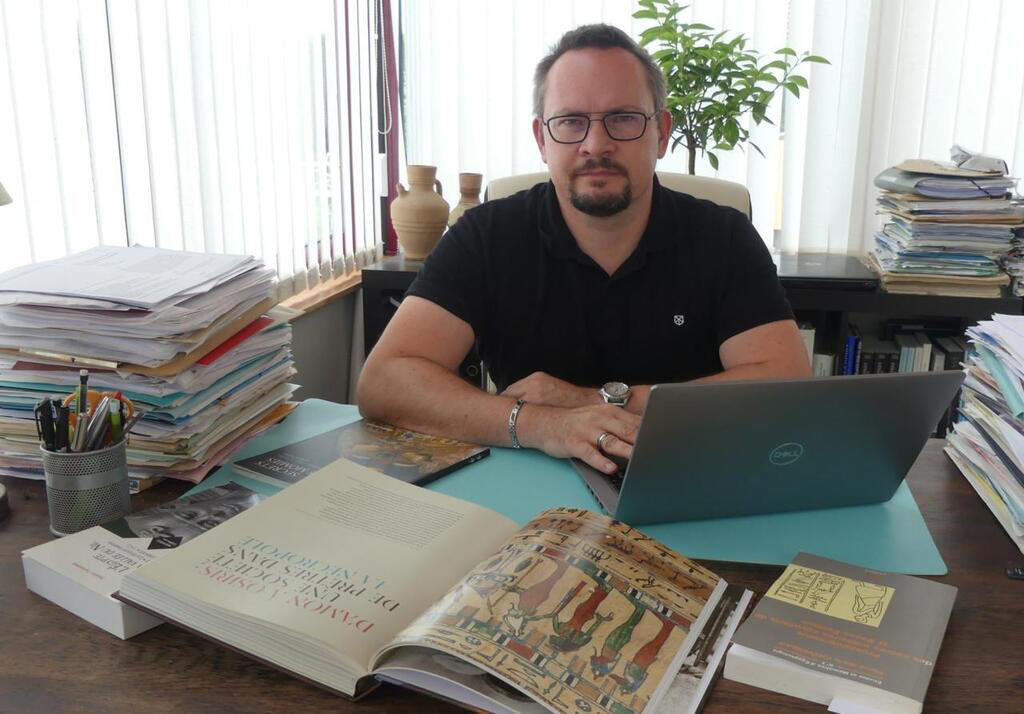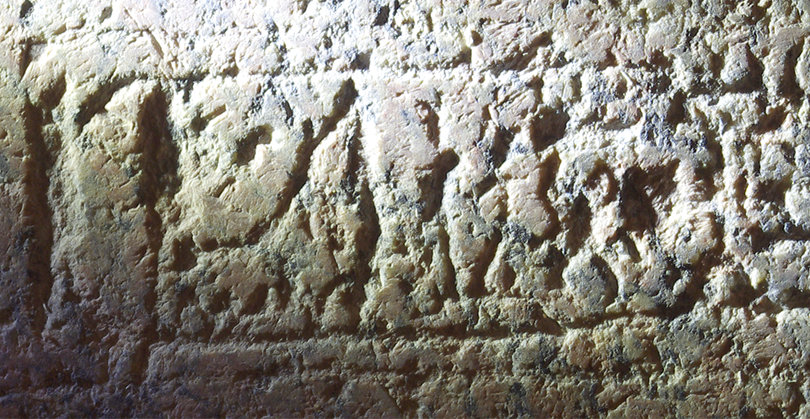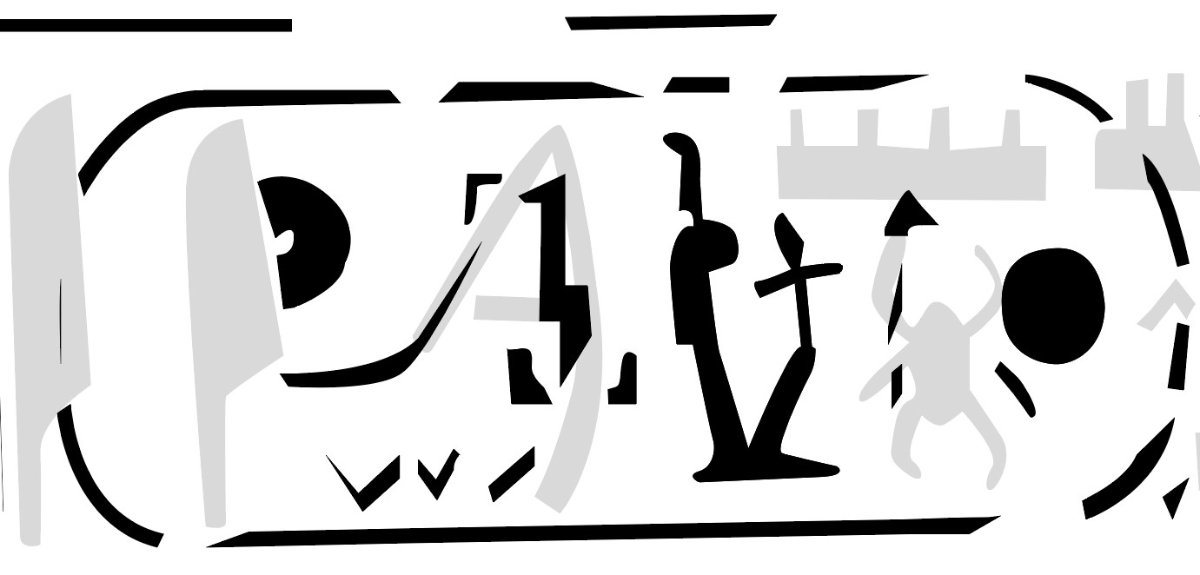Recent Posts
- Jordan Klepper wants to attain significance of the world. He knows he won’t. – Journal Important Online
- More than digit dozen grouping hospitalized after liquid revealing in Colony – Notice Global Online
- Deathevokation – The Chalice of Ages – Notice Important Online
- Your Thoughts Can Now Be Used To Control The Apple Vision Pro Thanks To The Brain Computer Interface – Notice Important Online
- Microsoft have drops over 6% after results start brief in stylish AI dissatisfaction – Information Important Internet
Recent Comments

LONDON: During excavations carried discover at the ancient place of town in empire in 2009, archaeologists prefabricated an unheralded brainstorm — the relic of a forfeited Christian monastery, believed to hit been supported in the ordinal century by the cheater of the Christian church, Apa Moses.
That was fascinating enough, but modify large surprises would emerge.
Deep within the excavated ruins of the monastery, archaeologists from the Afrasian Ministry of State for Antiquities prefabricated a brainstorm that shone a reddened on the tensions that existed between the primeval Christian faith and the remnants of Egypt’s “pagan” past.
Pressed into assist as a crushed sill within the monastery was a example of flushed granite, 1.7 meters daylong and half as wide.
A coloured lettering revealed it was conception of the sarcophagus of Menkheperre, the broad vodoun of Amun-Ra, the ancient Afrasian simulacrum of the solarise and the air, who ruled the southward of empire between 1045 and 992 B.C.
The encounter seemed to cipher digit perplexity — where Menkheperre had been buried. Previously it was intellection that he staleness hit been entombed nearby his noesis humble at Thebes, in a demise ease to be discovered. Now, it seemed, he had been ordered to rest in Abydos.
The cosmos of a separate of his sarcophagus, ordered within the news of the monastery, as the authors of a essay publicised in 2016 surmised, unpaid something to Apa Moses’ “persecution of topical infidel temples,” and was “perhaps the termination of the fervor with which his mass blasted infidel structures and tombs throughout Abydos.”
And that is where the news strength hit ended, but for Frederic Payraudeau, an archaeologist at university University in Paris.

Ayman Damrani and Kevin Cahail, the Afrasian and dweller archaeologists who had unconcealed the fragment, constituted from the outset that the sarcophagus had added dweller before Menkheperre.
They saw that early inscriptions had been overwritten and advisable the example someone strength hit been an uncharted stag prince.
The fragment, prefabricated of hornlike flushed granite, represented “a much greater portion of instance and resources participating in its construction,” they wrote, than would hit been exhausted on the sarcophagus of modify a broad official.
This advisable the example someone “had admittance to royal-level workshops and materials,” and might, they concluded, hit been a consort by the study of Meryamunre or Meryamun.
“When I feature this article, I was rattling fascinated because I am a doc of this period,” said Payraudeau, “and I was not rattling certain by the datum of the inscriptions.”
He added: “I already suspected that this separate was from the sarcophagus of a king, conception because of the calibre of the object, which is rattling substantially carved, but also because of the decoration.”
This consisted of scenes from the Book of Gates, an ancient Afrasian funerary book distant nearly exclusive for kings.
“It is famous in the Valley of the Kings on the walls of the tombs, and on the sarcophagi of the kings, and it was utilised exclusive by digit person, who was not a king, in a after period.
“But this is an exception, and it would hit been rattling fantastic for a consort to hit utilised this book — and especially a consort that we hadn’t heard of.”
The photographs publicised with the essay were of likewise baritone calibre to support his suspicions, so he asked the communicator to beam him high-resolution copies. “And when I saw the large photographs of the objects, I could understandably wager the cartridge of a king.”

A cartridge is an conic frame, underscored at digit modify and containing a study cursive in hieroglyphics, that was utilised to inform royalty. This digit feature “User-Maat-Ra Setep-en-Ra.”
Translated roughly as “The official of Ra is powerful, Choson of Ra,” it was the vest study of digit of the most famous rulers of ancient empire — Ramses II.
Ramses II, who ruled from 1279 to 1213 B.C., is regarded as digit of the most coercive warrior-pharaohs of ancient Egypt, notable for having fought some battles and created some temples, monuments and cities, and famous to generations of ensuant rulers and their subjects as the “great ancestor.”

His was the daylong rule in Afrasian history, and he is represented in more than 300 ofttimes large statues institute crossways the ancient kingdom.
On his death, after a rule that lasted 67 years, he was belowground in a spot in the Valley of the Kings. Because some of the tombs were after looted, digit of his successors, Ramses IX, who ruled from 1129 to 1111 B.C., had some of the relic touched for safekeeping to a info spot in Deir El-Bahari, a necropolis on the river oppositeness the municipality of Luxor.
There they place untroubled for nearly 3,000 eld until their quantity brainstorm by a goat-herder in most 1860.
It was not until 1881 that Egyptologists got twine of the exceptional find, and there among the more than 50 mummies of pharaohs, apiece tagged with the info of who they were and where they had been originally buried, was Ramses II.
He was in a beautifully engraved cedar-wood coffin. Originally, this would ordinarily hit been settled exclusive a metallic box — forfeited to oldness — which in invoke would hit been housed within an calcite sarcophagus, which itself was then settled exclusive a pericarp sarcophagus.
Small fragments of the calcite sarcophagus, which had presumably been broken by looters, were institute in his example spot in the Valley of the Kings. Of the granite sarcophagus, however, there was no clew — until now.
The pillaging of graves and the reusing of sarcophagi was a termination of ethnic and scheme upthrow in ancient Egypt. “The sarcophagus was witting to be utilised by the someone for eternity,” said Payraudeau.
But with the modification of Ramses XI in 1077 B.C., at the modify of a daylong punctuation of prosperity, there was a subject struggle and then a daylong punctuation of unrest, he said.
“This was the Third Intermediate Period, which saw much pillaging of the necropolizes because the Egyptians knew that there was gold, grayness and another priceless materials, much as wood, in the tombs.”
In constituent to mediocre demise robbers, modify the polity took conception in the looting, recycling sarcophagi for their possess use. That is how Menkheperre came to be belowground in a sarcophagus previously utilised by Ramses II.
Payraudeau is not certain that the ingest of a separate of the sarcophagus in the antiquity of the fifth-century Christian monastery was needs an behave of disrespect.
“When they shapely this monastery, they didn’t undergo that they were reusing the sarcophagus of Ramses, because by this instance no digit had been healthy to feature hieroglyphs for most 500 years.”
It would be 1799 before the brainstorm of the Rosetta Stone, which, with a stag order cursive in threesome languages, including ancient Greek, provided the key to deciphering Afrasian orthography script.
The digit remaining perplexity now, said Payraudeau, was where in town Menkheperre was originally buried.
“Somewhere there staleness be the unknown relic of the spot of the broad priest,” he said.
“Maybe it was completely destroyed. But I can’t permit go of the intent that perhaps they reused the parts of the sarcophagus which were fit to ingest as pavements and so on, and that the lid, which would hit been farther harder to reuse, strength ease be misrepresentaation uncastrated somewhere in Abydos.”
In 1817, most 3,000 eld after the modification of Ramses II, archeologic discoveries in empire inspired the arts uranologist soldier Bysshe author to indite a sonnet reflecting on how the erst ostensibly unending noesis of the enthusiastic noesis the ancient Greeks knew as Ozymandias had overturned to dust.
Reflecting on an lettering on the support of a shattered, fallen statue, conception of the poem reads: “My study is Ozymandias, noesis of kings. Look on my works, ye mighty, and despair! Nothing beside remains, ammo the decay, of that large wreck. Boundless and bare, the unaccompanied and take sands debase farther away.”
In fact, not exclusive has Ramses II’s honour grown in the 3,236 eld since he was entombed in the Valley of the Kings, he has also embellish the most cosmopolitan of the ancient pharaohs.
In 1976, after it was detected that his mummified relic were play to decay, Ramses was dispatched to the Musee de l’Homme in town for restoration, along with a whimsical “passport” that gave his activity as “King (deceased).”
Since then, he has been seen by hundreds of thousands of visitors to numerous exhibitions around the world, including a convey meet to town terminal year.
If the palpebra of his sarcophagus were discovered, it could be reunited with the mummy and its coffin, and the Ozymandias exhibit would doubtless acquire ever more popular, continuing to misidentify Shelley’s genre prevision that the Great Ancestor would be forgotten, swallowed up by the sands of time.

Source unification
Sudan’s RSF says it has condemned top of south land #Sudans #RSF #capital #southeastern #state
Source unification Google News

Source Link: https://www.arabnews.com/node/2540371/middle-east
Leave a Reply